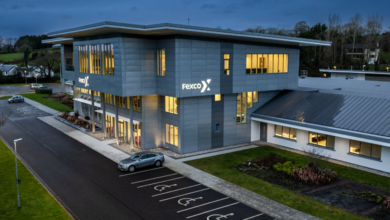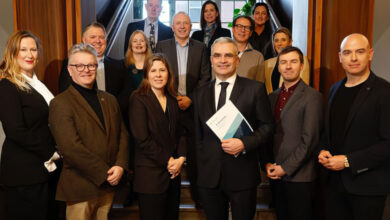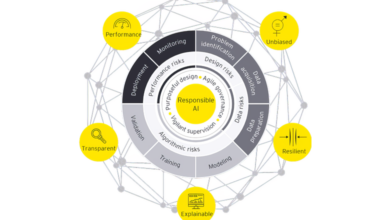Halfway through the Digital Decade

Barry Lowry, the Government’s Chief Information Officer, tells eolas Magazine that Ireland has built a “solid foundation” on Digital Decade delivery, but that the work ahead demands “ambition, innovation, and relentless delivery”.
The Digital Decade was formally launched in 2021 by European Commission President Ursula von der Leyen, setting out a vision for Europe’s digital transformation by 2030. The initiative outlines four key dimensions: digital skills, digital infrastructure, digital business, and digital public services. Progress in these areas is closely tied to funding through the EU Recovery and Resilience Facility and accompanied by regulatory developments at both EU and national levels.
Lowry begins by framing Ireland’s position within this European context. “We are halfway through the Digital Decade, and the European Commission is closely monitoring how each country is progressing,” he says. “It is essential that Ireland continues to align with the targets while also addressing our own national needs and priorities.”
Strong foundations for digital government
Lowry outlined how digital government capability directly influences wider economic performance. Citing international examples such as Denmark, Singapore, and Estonia, he argues that countries with robust digital public services tend to lead in digital business competitiveness. “Ireland is a positive example of how digital government can attract foreign direct investment, support indigenous enterprise, and contribute to wider economic growth,” he states.
Ireland’s digital economy is currently valued at approximately €50 billion, representing 13 per cent of national GDP. The Irish ICT market is worth €19 billion and continues to expand. Over 1,000 companies operate in the sector, including a mix of foreign multinationals and Irish-owned SMEs.
“If Ireland is to remain at the forefront of digital innovation in Europe, we must continue to invest in talent, infrastructure, and the systems that support digital governance.”
This growth, Lowry notes, has underpinned strong corporate tax revenues, enabling increased government investment in public services. “A significant portion of the €28 billion in corporate tax collected last year can be attributed to the strength of the tech sector,” he says.
Skills, AI, and regional balance
Despite this progress, Lowry highlights several areas of concern. Growth in artificial intelligence capabilities in Ireland has been modest, with only a 0.6 per cent year-on-year increase on 2023. “This level of growth will not position Ireland to benefit fully from the AI-driven opportunities emerging globally,” he cautions.
Digital skills remain a key area for development. The proportion of ICT specialists in the workforce declined by 1.6 per cent in the most recent data, against an EU target of 10 per cent by 2030. Moreover, participation in ICT-related third-level education is not increasing at the necessary pace, and gender imbalances persist. “We are not yet making digital careers sufficiently attractive or accessible, particularly to young women,” Lowry notes.
Geographic disparities also present a challenge. While Dublin exceeds the EU’s 2030 target of 10 per cent of its workforce employed in ICT roles, many other regions fall significantly behind. “Despite the National Broadband Plan and increased investment, the digital economy remains heavily concentrated in the capital,” Lowry says.
Programme for Government
In assessing Ireland’s preparedness to meet future digital demands, Lowry pointed to several structural strengths. Ireland has been positively rated by the OECD for its progress in digital government, ranking eighth in the organisation’s most recent assessment.
“We have embraced digital by design, prioritised user-driven services, and increasingly adopted open-source solutions,” he says.
The current Programme for Government, Lowry asserts, reflects a strong understanding of the digital agenda. “The Minister [Jack Chambers] is engaged with the issues and has demonstrated commitment to scaling our digital capabilities,” he notes.
Key priorities include supporting the growth of data centres powered by renewable energy, expanding digital skills, and ensuring inclusive participation in the digital economy.
However, Lowry also emphasised the need for legal and regulatory frameworks to keep pace with technical progress. “We developed a new digital wallet that was technically ready for launch, but legislative delays meant it could not proceed,” he said. “If we do not align our legal frameworks with our digital ambitions, we risk stalling progress.”
Future priorities
Looking ahead, Lowry reinforced the importance of maintaining momentum and translating strategy into delivery. He highlighted the economic significance of AI, the need to scale infrastructure sustainably, and the role of public sector digital services in reinforcing Ireland’s international competitiveness.
“The next three to five years will be critical,” he says. “If Ireland is to remain at the forefront of digital innovation in Europe, we must continue to invest in talent, infrastructure, and the systems that support digital governance.”
Lowry concludes with a call to action. “The Programme for Government provides a strong vision, but delivery is where success will ultimately be measured.
“Our collective responsibility is to ensure that this vision is realised in a way that benefits the economy, the public service, and society as a whole.”





